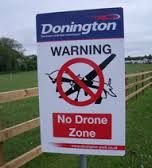My attention was drawn to the interview conducted with Prof Kirstie Ball of the Open University in the September Professional Security dealing with the subject of surveillance but in particular in relation to the use of drones.
The current position
Unmanned drones that weigh less than 20kg can be used by anyone as long as they remain within the operator’s line of sight and with the relevant permission from the Civil Aviation Authority. If you are using a drone for commercial use or with a surveillance camera fitted you must not fly them at all within 50m of people, vehicles or buildings and not at all in congested places like concerts at Glastonbury. Detecting offenders however remains an impossible task and prosecuting offenders under existing legislation unlikely. Drones which can now be purchased for as little as £30 can be deployed with surveillance cameras and whilst most will be used for genuine non intrusive enjoyment by their operators, the potential security threats posed to most in our industry will seem obvious.
Privacy
As far as the general public is concerned most of the media coverage so far has been about drone safety and users flying these devices too close to aircraft, airports or crowded areas in public places. Other than this it has been about public privacy issues rather than a more serious debate about the national or public security implications posed. The increased prospect of the expanded use of unmanned drones has raised the height of concern for legislators, crime agencies, civil liberty groups and the security industry just to mention a few. The threat of pervasive surveillance makes a compelling case for those adverse to this type of extremely sophisticated technology.
Security awareness
The security industry must remain alive to the potential risks posed by the misuse of this technology as reports received from across the world, particularly America reveal ingenious methods being used to circumvent security systems in use. Whilst most drones are noisy and quite visible during daylight hours, they still pose a threat as they are capable of carrying out reconnaissance around buildings and grounds without easy detection. Some experts say that because of their ability to get close in to potential targets, drones are thought to pose a greater threat than websites like Google’s Street View and Google Earth Services which have been accused of assisting criminals.
Whilst drones are becoming a tool for criminals a more sinister threat looms of their use by terrorists. Government agencies are aware that these pint sized aircraft are difficult to detect and even more difficult to stop. Increased popularity with entrepreneurs and hobbyists as well as those engaged in criminal activities should be an indicator to our security industry that we need to understand that the threat is not going to go away anytime soon.
Limitations
Most small drones remain limited by a short battery life and a small capacity payload. The more popular inexpensive consumer drones can only carry a couple of pounds in weight. Some of the features however have made these devices increasingly attractive for businesses, particularly photographers in that they are small, easy to fly and with the right equipment installed can capture high definition images making them a powerful tool for criminals and terrorists alike.
industry emerges
A growing industry appears to be emerging worldwide to tackle the problems being identified, offering systems to detect drone usage and alerting those with a vested interest such as airports, prisons and public buildings. According to available information a 100 per cent detection objective is still difficult to achieve as the available technology methods are currently imperfect. This leaves us with a feeling of unease and a level of unknown vulnerability, very much like when one is operating a CCTV system with some of its cameras off-line.
And finally
It was reported in September this year that intelligence officers at the National Offender Service (NOMS) revealed they were concerned at the potential to use remote controlled unmanned aerial vehicles (UAVs) to drop lethal weapons into jails after a package of the same size and weight of a handgun was successfully dropped undetected into an unnamed maximum security prison during covert testing earlier in 2015. At the Defence and Security Equipment International show in London analysts from NOMS described drone use as an emerging threat which will increase as UAV technology becomes cheaper and easier to use. It is already known that organised crime gangs are posing an increased threat to security in Britain’s prisons by getting drugs and mobile phones into jails by utilising commercial drones to lift packages containing these items. Britain’s 150 prisons are now preparing themselves for this type of security breach as the implication of increased illicit goods can only spell problems for the prison service. Drones are a positive security threat, now and in the future, so you will be well advised to keep a track on this technology.
Pictured: Sign at Castle Donington, Leicestershire










